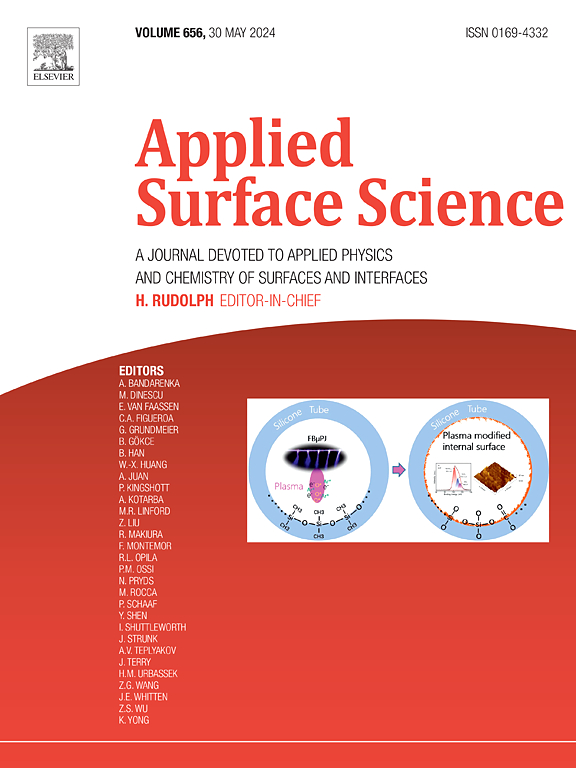溴化十六烷基吡啶作为高效捕收剂浮选分离石英和石膏
IF 6.3
2区 材料科学
Q2 CHEMISTRY, PHYSICAL
引用次数: 0
摘要
磷石膏的提纯对其资源利用和环境保护至关重要。浮选法是去除PG中石英杂质的常用方法,本研究开发了一种新型捕收剂十六烷基溴化吡啶(CPB)用于浮选分离石英和石膏。采用微浮选试验研究了CPB处理石英和石膏的浮选性能。通过Zeta电位、接触角、傅里叶变换红外光谱仪(FTIR)和x射线光电子能谱(XPS)分析了CPB在石英上的收集机理。结果表明,CPB在pH为1.8 ~ 9.5的较宽范围内对石膏中的石英具有较强的捕收能力和选择性。进一步分析表明,CPB与石英的相互作用机制包括氢键和静电吸引。通过这两种相互作用,CPB被吸附在石英表面,增强了石英的疏水性和可浮性,从而实现了石膏和石英的选择性分离。综上所述,本研究为磷化工实现PG的提纯提供了有价值的见解。本文章由计算机程序翻译,如有差异,请以英文原文为准。

Utilization of cetylpyridine bromide as an efficient collector for flotation separation of quartz from gypsum
The purification of phosphogypsum (PG) is crucial for its resource utilization and environmental protection. The flotation method is commonly used to remove quartz impurity from PG. In this study, a new collector, cetylpyridinium bromide (CPB), was exploited for the flotation separation of quartz and gypsum. Micro-flotation experiments were carried out to investigate the flotation performance of quartz and gypsum treated with CPB. The collection mechanism of CPB on quartz was examined through Zeta potential, contact angle, Fourier Transform Infrared Spectrometer (FTIR) and X-ray Photoelectron Spectroscopy (XPS) analysis. The flotation results showed that CPB exhibited strong collecting ability and selectivity for quartz from gypsum across a wide pH range of 1.8 to 9.5. Further analysis suggested that the interaction mechanism between CPB and quartz involved hydrogen bond and electrostatic attraction. Through these two interactions, CPB was adsorbed onto the surface of quartz, enhancing the hydrophobicity and floatability of quartz, thus enabling the selective separation of gypsum and quartz. Overall, this research provides a valuable insight for phosphorus chemical industry to achieve the purification of PG.
求助全文
通过发布文献求助,成功后即可免费获取论文全文。
去求助
来源期刊

Applied Surface Science
工程技术-材料科学:膜
CiteScore
12.50
自引率
7.50%
发文量
3393
审稿时长
67 days
期刊介绍:
Applied Surface Science covers topics contributing to a better understanding of surfaces, interfaces, nanostructures and their applications. The journal is concerned with scientific research on the atomic and molecular level of material properties determined with specific surface analytical techniques and/or computational methods, as well as the processing of such structures.
 求助内容:
求助内容: 应助结果提醒方式:
应助结果提醒方式:


